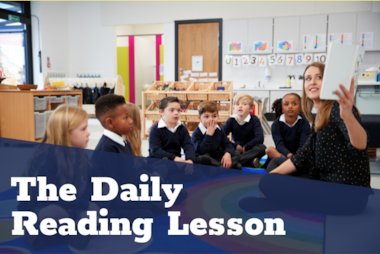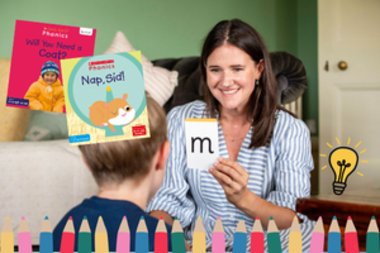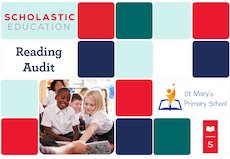Reflections on the teaching of reading
In this guest blog post, Maddie Towne, a Year 6 Teacher and English Lead at Fossebrook Primary School reflects on her experiences of the teaching of reading.
At Fossebrook Primary School in Leicester our ethos is firmly rooted in our belief in providing the best opportunities for all of our pupils. It is a place of discovery and wonder, a place where we pursue high academic standards but also provide a well-balanced education, a place where aspiration is key and learning is for all.
Last summer, as English Lead and as part of our drive for continuous improvement, I was seeking some independent evidence to challenge and support our thinking around teaching of reading. I came across the Scholastic Reading Audit, which is comprehensive and research-informed, and is provided free of charge to individual schools. With the new academic year in sight, this was the perfect time to reflect upon present practice, and review what was working well and areas that needed developing further.
Completing the audit took just over an hour. It was clearly sectioned into multiple areas – linked to the ‘Pillars of Reading’ – phonics, comprehension, fluency, vocabulary, oracy and reading for pleasure. Having had previous CPD on effective ways to develop reading, I could see clear links to Scarborough’s ‘Reading Rope’. For each section (‘pillar’), you reflect upon current practice within each year group; what assessments and outcomes for pupils are like; interventions; and the school’s reading policy.
After receiving the 50-page report – its breadth and depth definitely being a strength – I was provided with a wealth of information about each area, including academic research; a summary of what our school is doing currently; and a clear gap analysis with questions to consider. Each section is RAG-rated with a visual summary of our strengths and areas for development – and my first step was to update our school’s reading policy to ensure that all the pillars of reading were explicitly included.
Whilst ‘fluency’ was an area of strength, it was clear that we were putting an over-emphasis on the rate at which pupils were reading (i.e. 90+ words per minute) and not explicit skills such as expression, automatic word recognition, rhythm, phrasing and smoothness. One of the suggestions given was to attend further CPD on developing fluency, so I attended a Scholastic event on ‘Improving Reading Achievement Though Fluency’ with Professor Tim Rasinski. Whilst watching the session, I realised it would be perfect to share with staff in school and I created a range of questions for colleagues to consider. This was discussed within a staff meeting and we agreed on a range of strategies to be implemented across the school, including: skills being taught in daily shared reading; fluency interventions; and introducing a new way to assess fluency using Professor Rasinski’s Multidimensional Fluency Rubric.
Another area identified concerned book knowledge for teachers, parents and pupils – relating to libraries, book events, home readers and family engagement. To improve pupil understanding and parental engagement, I have created a high-quality, half-termly newsletter. Within these newsletters, I have included various exciting aspects such as an author spotlight (contacting them through Twitter); recommended reads for each year group (showcasing books that parents and pupils might be unfamiliar with); ‘book match’ which suggests books similar to other books that children are often interested in; and new book releases. These have promoted discussion with pupils in corridors and parents on playgrounds, with children now recommending books for me to share in each new edition.
To improve teachers’ book knowledge, as well as the breadth of books read aloud and discussed across the curriculum, I mapped out a range of age-appropriate ‘core texts’ for each year group (linked to our topics). Within this, I wanted to ensure a diverse representation of authors and protagonists were evident, so that all children could see themselves represented. I implemented a weekly reading assembly, including texts for different phases to sensitively explore key issues with pupils.
We have also held Scholastic Book Fairs which have significantly promoted reading across the school community. These were co-ordinated with parents’ evening and Christmas – times when books were more likely to be bought. It has been exciting seeing children and parents spotting books from the reading newsletter and choosing those books to buy. Staff could be heard talking about the books they wanted to buy with the children – I had a pile I had bought on my desk and the children wanted to buy the same ones so we could discuss them together.
To get the most out of completing the Scholastic Reading Audit, being honest is key. It is an excellent way to reflect upon reading provision and gain suggestions on next steps with links to current research to underpin practice. As with anything in education, it is what is done with a resource that matters. In our school, the buzz around reading has increased significantly as a result of the changes we have made following the audit – for children, teachers and parents – and, for me, that is most important change.

Maddie Towne
Maddie Towne is a Year 6 Teacher and English Lead at Fossebrook Primary School, part of Discovery Trust. She presented this work at Scholastic’s How can MATs deliver effective literacy improvement programmes that help children learn, and love, to read? online event on 27th June 2022.
Similar Posts
-

Introducing the Daily Reading Lesson
Scholastic launched the Scholastic Reading Audit five years ago, a comprehensive tool designed to support primary school teachers and leaders in teaching children to read. Over the years, we have seen some truly brilliant…
-

Scholastic Reading Audit: Key issues and trends in the teaching of reading
Five years ago, Scholastic published the Scholastic Reading Audit, a free tool to support schools in the teaching and leading of reading. Our 2021-2022 summary report is now…
-

Phonics Books: What Parents Need to Know
Miss Mabel from Reading Roots explains how to choose the right books for early reading success

